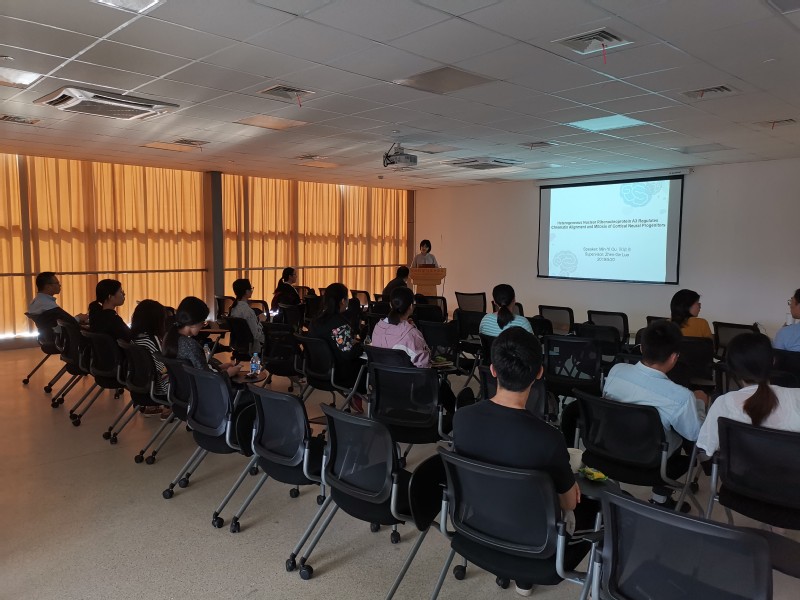In the afternoon of May 20, 2019,RNA and Chromatin Club (RCC) meeting was held in Room A542 of L building. In this meeting, Dr. Zhang Fan from Lab of Structure Biochemistry, and Ou Minyi from Prof. Luo Zhen-Ge’s lab shared their new research results with us.
Minyi gave the first talk titled “Heterogeneous Nuclear Ribonucleoprotein A3 Regulates Chromatin Alignment and Mitosis of Cortical Neural Progenitors”. In the beginning of her talk, Minyi explained the evolution of the gyrencephaly and compared the differences between developing human and mouse neocortex, in regard to the origin and importance of neocortex. Species-specific differences in neural progenitor proliferation and differentiation contribute to various brain sizes among different species. Existing research shows that radial glia (RG) and transit amplifying intermediate progenitor (IP) play important roles in the neurogenesis of neocortex. Heterogeneous nuclear ribonucleoproteins (hnRNPs) have been reported to be involved in the maintenance of stem cell self-renewal and development. For her research, Minyi has been focusing on the function of Hnrnpa3 in neurogenesis of neocortex. She found that Hnrnpa3 knockout mice displayed mitotic delay and reduced proliferation of cortical neural progenitors. There was also spindle misalignment of neural progenitor cells accompanied by frequent chromosome breakages in the neocortex of Hnrnpa3 knockout mice. Moreover, she also obtained similar results in human brain organoid. Thus, her research has demonstrated the important functions of Hnrnpa3 in the development of neocortex in both mouse and humans.
Following Minyi’s talk, Fan gave a talk titled “Molecular Architecture of the Mediator Middle Module Complexes”. RNA polymerase II (Pol II) is essential for life as it synthesizes the precursors of mRNA (messenger RNA) and most snRNA (small nuclear RNA) and microRNA. However, RNA Pol II cannot recognize transcription start sites by itself and requires the help of many transcription factors and coactivators, including the Mediator complex.Malfunction of the Mediator complex was implicated in many diseases such as cardiovascular diseases, behavioral disorders and cancer. Her research is focused on high-resolution structural analysis of the Middle Module (a subcomplex of the Mediator complex) that consists of eight subunits. As it is challenging to obtain high-resolution structures of the Middle Module due to the low native abundance, complex subunit composition and conformation of the Mediator complex, Fan tackled these challenges by overexpressing the Middle Module using a powerful expression system named MultiBac. She successfully obtained the entire Middle Module and is analyzing its structure using single-particle EM methods. Her research will lead to a better understanding of the role of Mediator complex in transcription initiation.
The RNA and Chromatin Club (RCC) meetings provide a platform for the students, postdocs and other junior research scientists to share their recent results and freely exchange their ideas. It is also a good opportunity for young scientists to give a talk in English in front of a big audience. This will help them to be prepared for more important talks in their future careers. There are usually two talks in English given by members from two labs in the School of Life Science and Technology (SLST) in ShanghaiTech University. Everyone in SLST is welcome to join us at the next RCC meeting in June.



